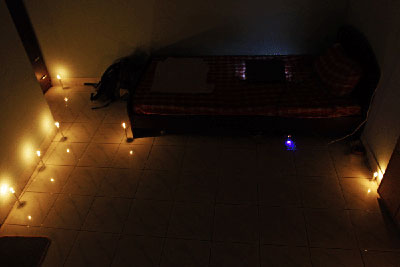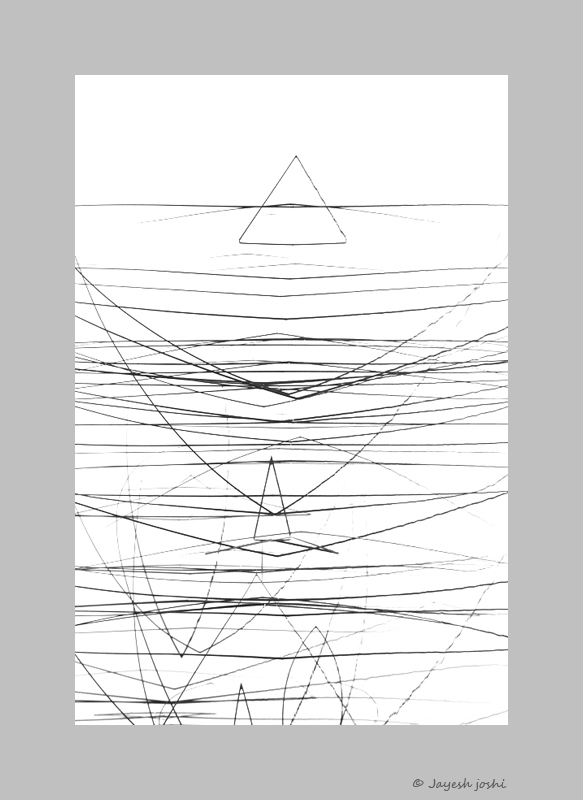A dear friend, great photographer Raviprakash S S whose work we have been enjoying at creativenaturephotography.net is conferred with prestigious Category winner award in Amphibians & reptiles category (Natural History Museum) for the featured image (below)
Space exists as gapingly vacuous void, ever so forlorn without a seed, ferment or fervor.
Who walks there?
Who beholds that penurious infinity, a whole lot of cosmos where nothing stirs?
Then…
..a rustle. Blades of grass, green snake passing through; green in green. There is a see’er (read seer) whose eye focuses on this indecipherable materiality called life and sleepy dimensions come alive. The flourish of focus in space is like a child in the womb; the most exquisite manifestation of co-dependence of the temporal and the spatial. The act of focusing transforms the spatial into mental by identifying matter with breathing, moving life.
So arrives a snake in Raviprakash’s garden (or eden?). I would prefer to call it eden because of the trust between the the photographer who is a visitor to his native place, and the snake-the resident native. The intimacy allows him to come as close as an earshot of the snake. I recall my birder friend Sujan Chatterjee narrating how to tell whether a place is perceived as safe by birds. “It is very safe if we are allowed to approach them within an earshot, not very safe if we are allowed no closer than a slingshot distance and unsafe if they stay a gunshot distance away.” Thus it emerges from “All eyes” and his earlier images of vine snakes taken at his native place that neither the photographer nor the snake are suspicious of each other’s presence.
In words of Raviprakash “Green vine snake is very attractive subject for me.. we have grown up seeing those friendly snakes in our neighbourhood. Though its a snake it really doesn’t scare us much ” and “CNP influence made me to look for different angles/compositions and hence i went behind the snake to see any opportunity. Popping eyes were just too good and i captured the snake with only eye in focus. I was capturing from about 15-18 inches from the eyes.. so even f/8 was giving DOF just to keep eyes in focus. The curvy snake added its own drama. I was extremely happy with the result. Since the snake was just about 6-8 feets from our house, i coud track its movements till noon..i ended up clicking mostly this snake in first half of the day. It gave me many opportunities with different angles (including top view).”
Ravi has been able to click from many possible perspectives; the present one being unique where a vine snake leaps into the frame looking as a vine with its head resembling a flower bud. The snake is presented as a dimorph switching appearance between a plant and a snake. The most interesting part is that it avoids all stereotypes of a snake image. We don’t see venomous intent. Nor does it arouse “proverbial desire” due to which snake, adam and eve have been reviled since the dawn of civilization. Instead it looks to be a friendly and genteel creature busy looking into its eden throwing back his eye once in a while, watching its own back.
For the snake it is a very liberating image because it does not echo any of our received knowledge about them. Far from making it look fatally fearful it brings to us an intimate creature. It often happens through cultural practices that things no longer remain things as they are. They acquire other meanings (venomous intent for one) which get foregrounded in our dealing with them. Actual subject stays hidden behind the mist of meanings. It requires a trusting habitat as this in order to clear the mist and know the true being of the other.
A photographer friend Dr. Parihar never titles his pictures. When asked about the reason he calmly replied “ I click visuals not meanings. A visual with obvious meaning is like a caged bird.”
“All eyes” in spite of having a title preserves sanctity of the visual. It clicks a snake and sets it free.
Adam, Eve and the proverbial reptile can safely book their return passage to Eden.










